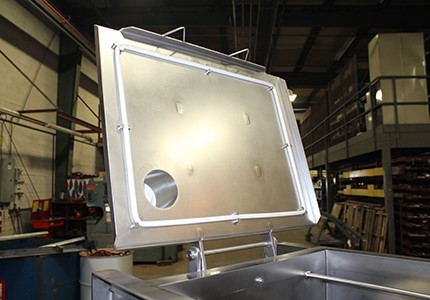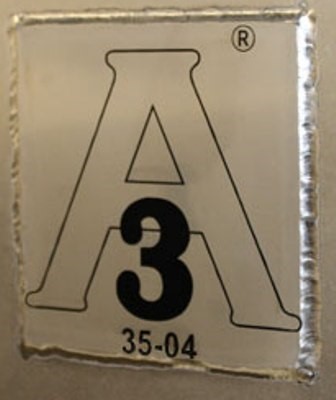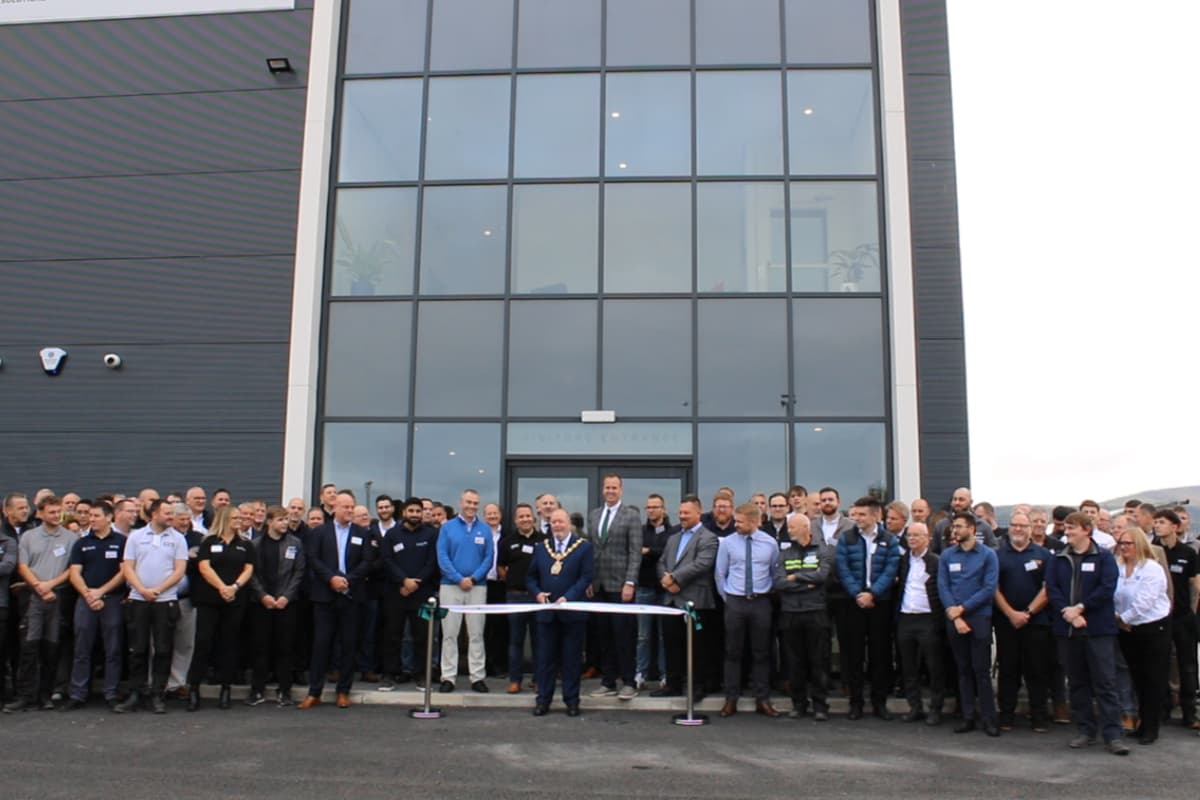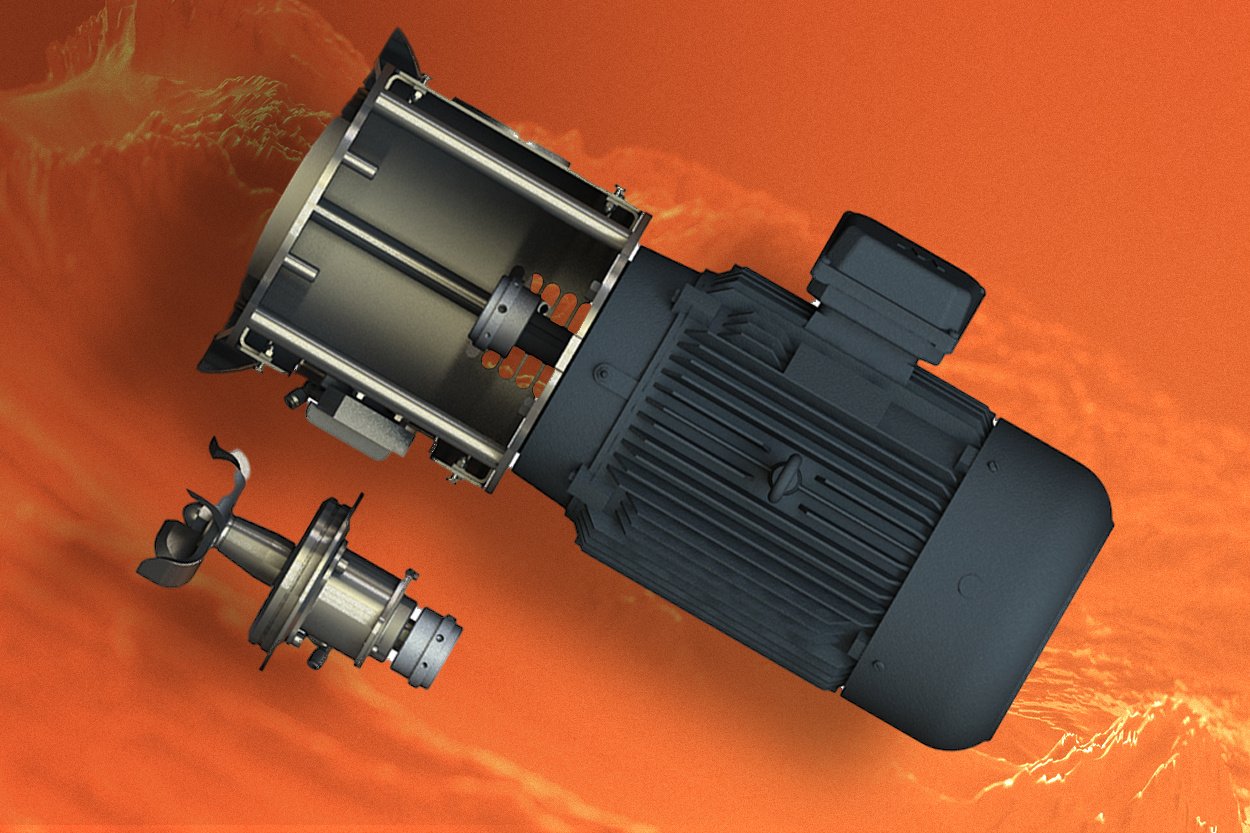How Marion Makes Cleaning Food Processing Equipment Easy
What does it actually mean when you say "clean?"
After all, every industry, environment, product line and process will involve somewhat different definitions of the words: clean vs. sanitary vs. 3A certified vs. contamination-free and more. Logically, what may be "good enough" for one mixing process won't even be close to good enough for another.
Clean would seem to be a simple word, but our projects typically begin with a deep discussion on the definition of the word "clean." It means different things for different plants and different industries. Food and pharmaceutical, for example, typically come back to 3-A certification standards as their definitions of clean. Plastics/resins customers still require clean, but certainly at a different level than food-grade installations. We work with customers to fully understand their definitions of clean and sanitation to ensure we're offering the right equipment solution and any supporting CIP systems needed.
When some processors use the word clean, they're really talking about cross-contamination instead, which is a different definition and, therefore, a different process standard. Take one of our customers that makes grout, for instance. When they talk about clean, they're talking not about sanitation but about the ability to clean the system, so one batch of grout color doesn't carry over to the next. Consider white grout - if the previous batch was producing black- or charcoal-colored grout, the cleaning process before the white batch goes through must be very rigorous but certainly isn't sanitary. So in that example, it's a question of cross-contamination, not sanitary-level clean.
In the end, clean isn't something for us to define at Marion; it's the customer's role to provide that spec for us to create the solution. Even within the same industry, we could go to 10 different food plants and hear 10 different definitions of clean. We'll create a mixing solution to whatever the customer's own definition might be – as long as we've defined it clearly and consistently for all to agree upon at the earliest stages of the project.
CIP: It's More Complex than It Looks
Clean-In-Place (CIP) often appeals to food processors because, on the surface, it seems like an easy methodology that can save labor costs and time in cleaning critical food processing equipment. However, maintaining CIP procedures effectively is a major process commitment for any facility, so take into account how well your equipment supports those procedures as you build out your processes.
CIP systems are generally self-contained units that include a way to both add and remove the cleaning materials from equipment that remains in place on the process line. One consideration that some processors don't always consider is that some chemicals used in CIP systems can be toxic and need special removal. For example, acid and caustic materials are excellent at removing just about any contamination in a mixer. Still, the next step is that you'll need to thoroughly rinse these residues out of the mixer and then properly dispose of the cleaning material.
In most jurisdictions, you can't just dump these caustic materials into the regular sewage system; you'll need the appropriate drainage and removal/treatment facilities. Both the setup and disposal contribute to additional costs beyond any CIP processes or equipment itself. It's common for some of our customers, as an example, to run their full CIP routine once per week, supplemented by less rigorous daily cleaning done manually or rinse-in-place procedures.
Of course, for any CIP process using caustic or harsh chemicals, your cleaning staff will need to be wearing the appropriate safety gear to protect their skin, eyes and respiratory organs. Maintenance, repair, and operations (MRO) staff members need to be experts and well-trained for any CIP process, whether the process is using caustics or even just to make sure they're following procedures properly to minimize cross-contamination or sanitation problems effectively.
How Marion Helps You Get to Your Definition of "Clean"
One of the CIP advantages for Marion equipment going into a CIP process line is that the equipment is already designed for easy sanitation. Marion's doors, valves, gaskets and spray units are ergonomically designed to make it easy to clean and inspect without any sophisticated add-on equipment. You may have other equipment in the factory that requires CIP, but often our customers find the design of a Marion mixer makes it easier to support CIP. Some of our customers even find they can follow less stringent Rinse-In-Place (RIP) or manual cleaning practices, even for applications like dairy and ready-to-eat foods.
Marion mixers have been engineered for decades regardless of the industry or application with CIP procedures in mind. For example, our valves, O-rings, seals and gasket covers are a competitive advantage for Marion, as they make cleaning your mixer much easier. Seals are a prime concern for customers since that's the source of common cross-contamination problems for many mixers. Our O-ring mixer gaskets are easy to remove and re-install, so operators can use pressure washers and easily gain access to critical areas for any swab tests or antigen tests their CIP routines call for.
Indeed, the mixer design plays a role in sanitation and cross-contamination. A lump breaker, for example, has all types of nooks and crannies in the unit that have to be addressed. Compare that to our v-cone mixer which has almost no crevices or nooks for contamination to settle. Therefore, customers must answer the question, "can we really get that lump breaker completely sanitized, or do we have to purchase a separate lump breaker for every process line?"
To answer those questions as part of the consultative process Marion uses with customers, we'll conduct detailed testing either at our facility or the customer's. This allows us to tear down the unit between batches, pull all the seals, look at discharge areas and the vessel's walls, and determine what type of sanitation or cross-contamination issues we'll have to address during normal processing at that facility.
Rinse-In-Place: A Clean Alternative
Rinse-In-Place (RIP), using either regular or high-pressure water spray, is worth considering for many processing solutions. RIP is common when caustic materials aren't used. The initial cleaning can be done with mops and brushes that reach into the equipment, using mild food-grade cleaning detergents. Using manual cleaning and RIP means that you can get equipment cleaned quickly and thoroughly while maintaining a safe environment in those applications that can support less stringent sanitation or cross-contamination regimen.
Clean Out of Place (COP)
You'd think that Clean-Out-Of-Place would be the opposite of Clean-In-Place, but frequently they are used in combination, sometimes even with RIP routines mixed into the facility's procedures. No matter what type of CIP equipment you use, some parts should always be removable for cleaning. For example, valves and injection nozzles will always have too many intricate parts to be effectively cleaned while still in place in a mixer. For that reason, it's best to choose a mixer with removable parts for cleaning out of place.
Many of our customers even have a duplicate set of parts on hand so that they can run any of their cleaning procedures with minimal loss of production time while they clean one set. In addition to nozzles and valves, removable gaskets and choppers can make the cleaning much easier and faster, translating value directly to your bottom line.
What's Best for You?
Clearly, these are complex issues, and we've learned over our decades of experience that one size does not fit all when addressing sanitation and cross-contamination. Instead, the proper equipment and cleaning procedures are defined by balancing the process, product and the economics of downtime.
In making the right choice, you'll want to leverage the expertise of your own process engineers and the equipment manufacturers to determine the best practices, procedures and mixer solutions for your specific applications.
Contact Marion's Application Engineers for assistance in finding the right equipment that meets your application's "clean" requirements. You can also reach us by phone at 800-397-6371.





